|
|
|
Luoghi come paesaggi
This catalogue was produced for the exhibition Luoghi come paesaggi held at the Uffizi Gallery in Florence. Curated by Maria Rosaria Nappi, the show was organized to coincide with the signing of the European Councilís Landscape Convention. Reproducing works of art by international artists in a well-structured fashion, the catalogue provides a vast panorama of contemporary trends in landscape depiction. There are essays, in both Italian and English, by Frits Gierstberg, Diego Mormorio, Antonella Russo and the curator herself.
Luoghi come paesaggi, Fotografia e committenza pubblica in Europa negli anni í90, Linea di Confine (Via Emilia Est 11, Rubiera, Reggio Emilia), 2000, p. 118, 25 x 30 cm.
|
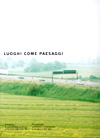
|
Roberto Bissani, Prima del distacco
This elegant catalogue was produced for Roberto Bissaniís solo-show at the LíAriete Art Gallery in Bologna. It gathers together the artistís photographic work carried out between 1994 and 1998. Subdivided into different sections, the images, reproduced large scale and printed using the KODAK DYE TRANSER process, form a comprehensive overview of Roberto Bissaniís work. The text accompanying the images is by Dario Trento.
Roberto Bissani, Prima del distacco, Zincografica Felsinea, 1999, p. 145, 24 x 31 cm.
|
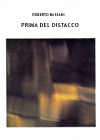
|
Doris SalcedoThis catalogue forms a complete, up-to-date monograph of work by Doris Salcedo, the internationally renowned sculptor who works in Bogota, Columbia. The poverty and misery of her country is reflected in her installations, which combine violence and existential desperation with an unexpected, evocative beauty. The catalogue also contains a series of written works. These include an interview with the artist by Carlos Basualdo, a poet and curator from New York, in which she discusses her influences, such as Joseph Beuysí work and the German poets. In addition to this, there are two essays: Silence Seen, by American art critic Nancy Princenthal, and Unland: the orphanís tunic by literary critic Andreas Huyssen; Paul Celanís Poems 1963-69; and an extract from Otherwise Than Being by philosopher Emmanuel Levinas.
Doris Salcedo, Phaidon Press (Regentís Wharf, All Saints Street, London), 2000, p. 160, 25 x 29 cm.
|
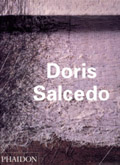
|
Richard Prince, The girl next door
This book collects together several series of Richard Princeís recent photographic work. Born in 1949, in the Panama Canal area, Prince creates a fascinating visual panorama of America today. The title of the book is a reference to the natural appearance of the subjects he photographs. Prince is interested in rearranging and piecing together images from magazines and adverts, in search of a form of ďre-photographyĒ.
His works are reproduced in the catalogue as color photographs on gloss paper. The images are complemented by Peter Noeverís critical commentary in English and German.
Richard Prince, The girl next door, Hatje Cantz Verlag (Senefelderstrasse, 12, Ostfildern,
www.hatjecantz.de), 2000, p. 72, 15,3 x 22 cm.
|
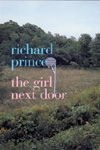
|
The Artistís Body
This complete volume, edited by Tracey Warr, traces the history of thought about the body, beginning with the first developments of Body Art up to the current phenomena of contemporary art. Beginning with key artists such as Marcel Duchamp and Jackson Pollock, the book analyzes various protagonists from the Sixties and Seventies such as Carolee Schneemann, Rudolf Schwarzkogler, Yoko Ono, Chris Burden, Ana Mendieta, Vito Acconci and Marina Abramovic, right up to today with the works of Matthew Barney, Antony Gormley, Mona Hatoum, Mark Quinn and Charles Ray. The second part of the book, printed on opaque paper with crisp color graphics, contains critical and literary pieces from Lucy R. Lippard to Thomas McEvilley, together with comments from philosophers and thinkers.
The Artistís Body, by Tracey Warr, Phaidon Press (Regentís Wharf, All Saints Street, London, N1 9PA) 2000, 304 pages, 25,5 x 30 cm.
|
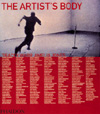
|
|
|
|